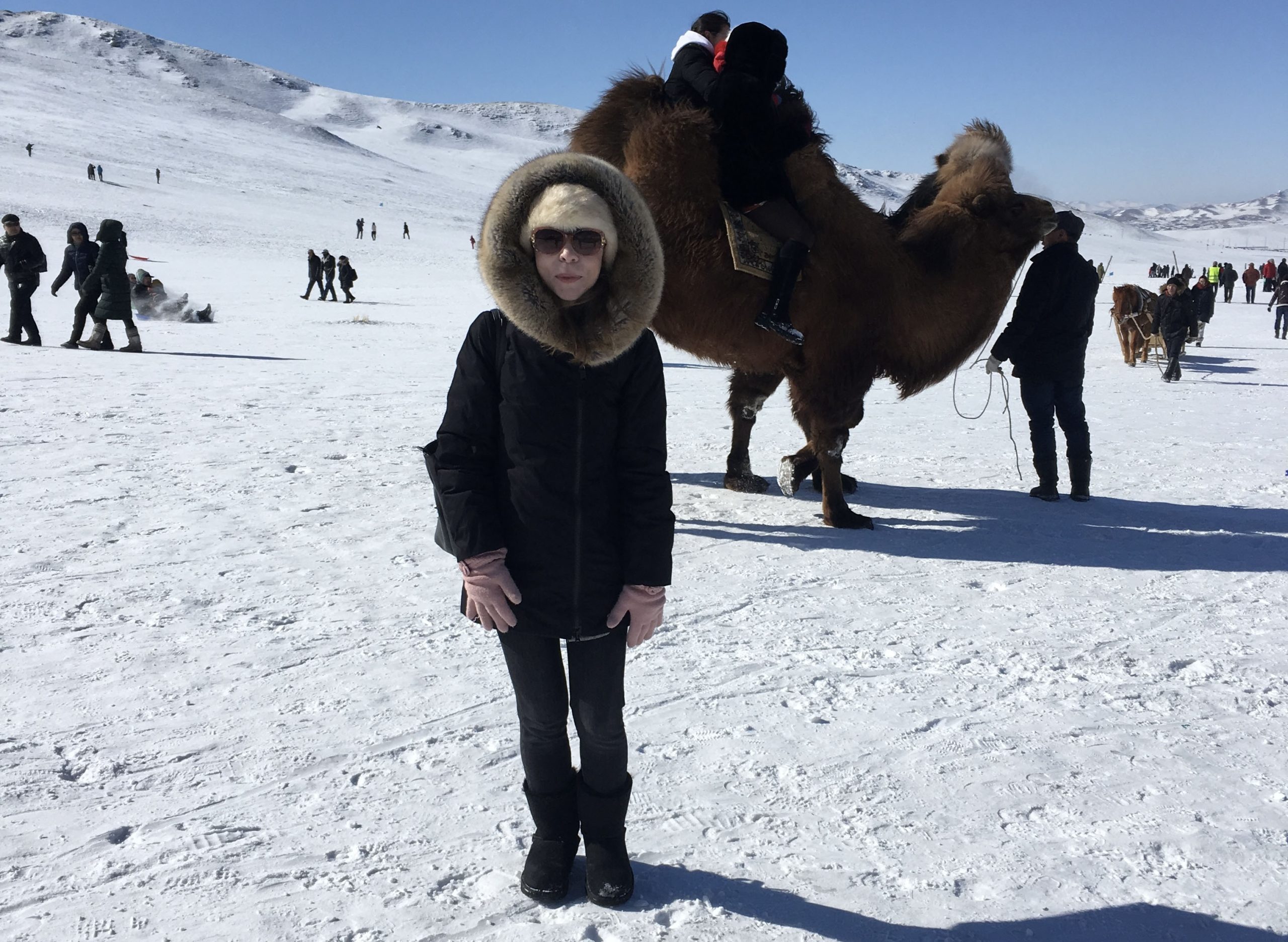
Petya Andreeva, Assistant Professor of Asian Art and Design History, Wins UNESCO Research Grant
When people typically think of nomadic or pastoral societies, images of warriors, herdsmen, and more come to mind. Petya Andreeva, an Assistant Professor of Asian Art and Design History in the School of Art and Design History and Theory at Parsons, wants to challenge that commonly held assumption, and hopes to expand representation of these important historical groups with new research that will showcase their lives as designers, artists, inventors, politicians, and more.
Andreeva recently received a grant from UNESCO in order to further her research, which will help her complete her first book, “Fantastic Fauna: The Politics of Zoomorphic Visuality in North China and Central Eurasia (500 BCE -1400 CE)” which is currently under review at a major university press. The grant will also help her write her second book by giving her the opportunity to conduct extensive archaeological and museum fieldwork in Siberia, Mongolia, Kazakhstan and other parts of North and Central Asia next summer.
“It means a lot to me that an international organization like UNESCO has recognized the importance of studying ancient societies, and their cross-cultural exchanges across pre-modern trade networks such as the Silk Roads which linked China and Europe,” shares Andreeva. “The award has recognized the importance of studying the interconnectedness and interdependencies of the ancient world, a phenomenon we have now come to call “globalization.” Indeed, faced with our contemporary debates surrounding mobility, migration and long-distance exchange, we need (now more than ever) to learn valuable lessons from the ancient past and recognize certain antecedents and patterns in the human experience.”
More than 800 international applicants from throughout the Asian humanities field applied for the highly competitive grant, and of the 12 winners selected, Andreeva is the only art historian. Of the winners, Andreeva’s project is also the only one focused on the “deep past,” and she hopes her new research will reach a wider audience during a time of unprecedented divisions and crises.
“I never view the ancient world in a discursive vacuum, and hope that more and more people will see how issues of migration, “Other-ing,” and inequality are not limited to our present moment and should be studied in broader and braver temporal and geographical frameworks,” explains Andreeva. “I also think this research can have vast implications in museum practices as well – in light of recent conversations about “de-centering” and diversifying curatorial practices, we need to rethink the ways museums deal with marginalized pasts and voices, like those of nomads.”
Andreeva’s research explores a broad range of topics, including the different ways the Mongol empire responded to the bubonic plague epidemic in the 14th century, how the epidemic impacted art, aesthetics, and architecture across the Mongol state, as well as cultural and artistic transmission in Eurasia, and zoomorphism and animality in image-making. She plans to focus particular attention on the reasons why certain images of monsters and other fantastic animals were transmitted across thousands of miles on the Eurasian steppe network, beginning in as early as 6th BCE, and highlight the social conditions that enabled the swift transfer of images and information in some places while it was ignored in others.
“In both books, I address problems associated with previously marginalized political and social actors, namely pastoral nomadic populations in Asia,” said Andreeva. “Far too often and for far too long, these nomadic societies have lived on the conceptual and historiographical fringes of “mainstream” scholarship and canon, overshadowed by the West’s fascination with sedentary empires like Greece, China, Persia.”
Various faculty, alumni, and students from Parsons have been earning recognition for their innovative projects and publishing important, including students in programs from throughout the School of Fashion who won scholarships from the Council of Fashion Designers of America, and Miodrag Mitrašinović, Professor of Urbanism and Architecture, who recently published two books about public spaces and their role in societies.
Andreeva’s research and teaching style embodies the university’s commitment to collaboration and interdisciplinarity. She has introduced a variety of unique courses to Parsons, including classes on funerary art and design in East Asia, the Silk Roads, Buddhist art, the arts of ancient China and other Eurasian empires, and more. The grant from UNESCO will allow Andreeva to expand her access to new data and visual materials that will ultimately be utilized by students during their time at ADHT.
“In all my teaching, I strive to expose students to sites, monuments and objects that very few people in the Western world (defined here as North American and European academia) have access to in their coursework and media exposure – some of my images have never been published or discussed in the U.S. scholarly community,” explains Andreeva. “My students are usually the first people to see some of the rare historical sites that I visit in my research travels and thus among the first to start important discussions around new discoveries.”
Working with students from many cultural backgrounds is one of Andreeva’s favorite aspects of being a professor at The New School, as is her regular engagement with other professors and institutes who have been instrumental in her work, such as Rhonda Garelick, Dean of ADHT, and the India-China Institute, including co-directors Mark Frazier and Manjari Mahajan, and deputy director Grace Hou.
“Through my interactions with New School students from around the world, I have started to embed new questions into my own work,” says Andreeva. “I view the ancient world as a cultural cauldron of sorts – a catalyst of powerful symbiotic exchanges. I also view the classroom in the same way – a place where cultural contact enables us to learn from each other and grow. This is, I think, very consistent with UNESCO’s mission and that of our university.”